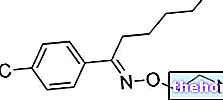
What is Hemangiol and what is it used for?
Hemangiol is a medicine that contains the active substance propranolol. It is indicated for the treatment of children with proliferative infantile hemangioma, a benign tumor (abnormal growth of non-cancerous tissue) of blood vessels. Hemangiol is used in infants with severe complications, including painful ulcers, at risk of scarring and with breathing difficulties, which require systemic therapy (treatment which may have an effect on the whole body). Treatment with Hemangiol should be started in children aged between 5 weeks and 5 months.
How is Hemangiol used - propranolol?
Hemangiol can only be obtained with a prescription. Treatment should be initiated by a physician with experience in the diagnosis, treatment and management of infantile hemangiomas, in a facility suitable for the management of any serious side effects. Hemangiol is available as a solution to be administered by mouth. The recommended starting dose of Hemangiol is 0.5 mg per kilogram of body weight (0.5 mg / kg), taken twice a day (at least 9 hours apart). The dose is progressively increased until the maintenance dose of 1.5 mg / kg twice daily is reached. The dose is given to the child during or immediately after a meal, using the oral syringe supplied with the bottle. Treatment with Hemangiol should last for at least six months and the patient should be monitored once a month, in particular to allow your doctor to readjust your dose See package leaflet for more information.
How does Hemangiol - propranolol work?
The active substance in Hemangiol, propranolol, belongs to a group of medicines called beta-blockers, which have been widely used to treat a variety of conditions in adult patients, including heart disease and hypertension. Although the mechanism of action of Hemangiol in proliferative infantile hemangioma is not precisely known, it is believed that several mechanisms are involved including the narrowing of blood vessels and therefore the reduction of the blood supply to the hemangioma, the suppression of the formation of new blood vessels in the tumor mass, inducing the death of abnormal blood vessel cells and stopping the effect of certain proteins (called VEGF and bFGF), which are important for blood vessel growth.
What benefit has Hemangiol - propranolol shown during the studies?
Hemangiol was investigated in one main study involving 460 children (aged 5 weeks to 5 months at the start of therapy) with proliferative infantile hemangioma requiring systemic therapy. The study compared different doses of propranolol with placebo (a dummy treatment); the main measure of effectiveness was the total or almost total disappearance of hemangiomas after 6 months of treatment. Hemangiol, taken at a dose of 3 mg / kg per day (in two separate doses of 1.5 mg / kg) for 6 months, was shown to be more effective than placebo. In about 60% (61 out of 101) of children treated with the most effective dose of Hemangiol (3 mg / kg / day for 6 months), hemangiomas disappeared completely or almost completely. a result that was observed in only about 4% (2 out of 55) of children treated with placebo.
What is the risk associated with Hemangiol - propranolol?
The most common side effects with Hemangiol (which may affect more than 1 in 10 children) are sleep disturbances, respiratory tract infections such as bronchitis (inflammation of the airways in the lungs), diarrhea and vomiting. Serious side effects seen with Hemangiol include bronchospasm (temporary narrowing of the airways) and low blood pressure. For the full list of all side effects reported with Hemangiol, see the package leaflet. Hemangiol should not be given to: premature babies who have not reached the correct age of 5 weeks (the correct age is age that he would have a premature baby if he were born at full term); breast-fed babies if the mother is being treated with medicines that should not be taken concomitantly with propranolol; children with asthma or with a history of bronchospasm; children with certain cardiovascular diseases, including low blood pressure; children prone to having low blood sugar levels. For the full list of restrictions, see the package leaflet.
Why has Hemangiol - Propranolol been approved?
The Agency's Committee for Medicinal Products for Human Use (CHMP) decided that Hemangiol's benefits are greater than its risks and recommended that it be approved for use in the EU. The Committee concluded that Hemangiol is an effective therapy for the "hemangioma. Regarding safety, the CHMP considered that the safety profile of the medicine is acceptable; the risks identified are those already known for propranolol and can be adequately managed.
What measures are being taken to ensure the safe and effective use of Hemangiol - propranolol?
A risk management plan has been developed to ensure that Hemangiol is used as safely as possible. Based on this plan, safety information has been added to the summary of product characteristics and package leaflet for Hemangiol, including the appropriate precautions to be followed by healthcare professionals and patients. The company will provide healthcare professionals who administer Hemangiol to patients with an information pack to inform them of the need to monitor children for any unwanted effects and to advise on how to manage these effects. It will also provide instructions on how to manage them. administer the medicine correctly to avoid the risk of low blood sugar levels Further information can be found in the summary of the risk management plan.
More information about Hemangiol - Propranolol
On 23 April 2014, the European Commission granted a "Marketing Authorization" for Hemangiol, valid throughout the European Union. For more information on Hemangiol therapy, read the package leaflet (included with the EPAR) or consult your doctor or the pharmacist. Last update of this summary: 04-2014.
The information on Hemangiol - propranolol published on this page may be out of date or incomplete. For a correct use of this information, see the Disclaimer and useful information page.























-nelle-carni-di-maiale.jpg)




